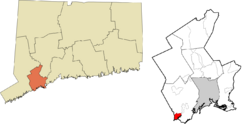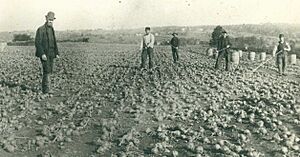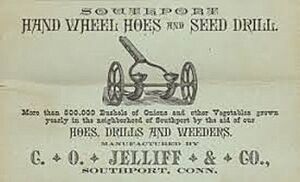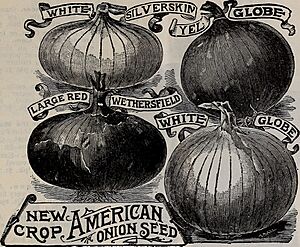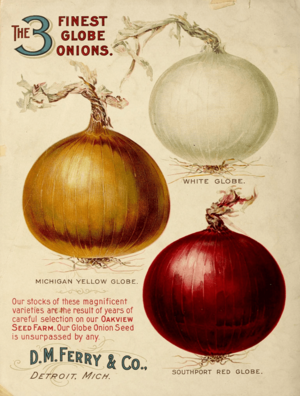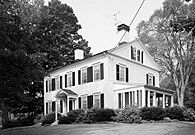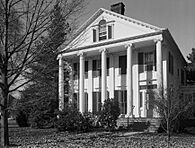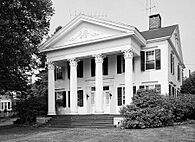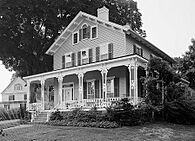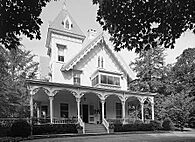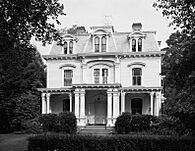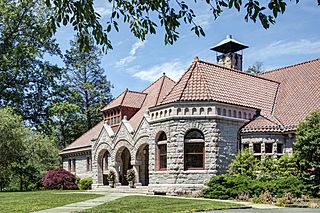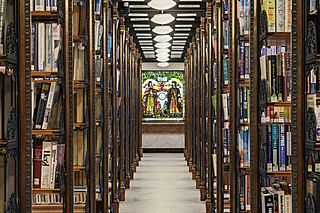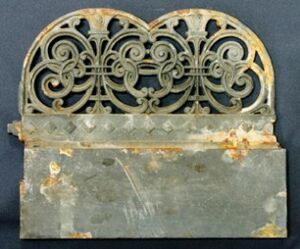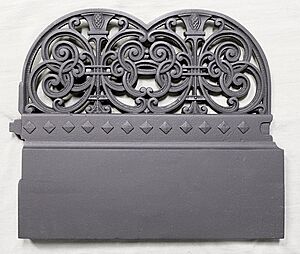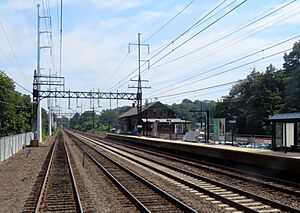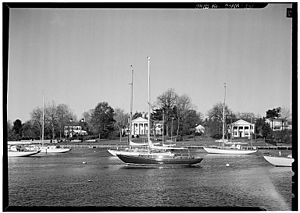Southport, Connecticut facts for kids
Quick facts for kids
Southport
|
|
|---|---|
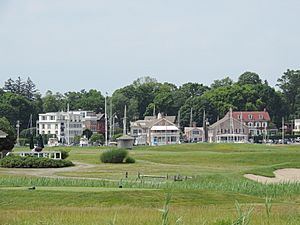
A view of Southport Harbour from neighboring Sasco Hill.
|
|
 Fairfield County and Connecticut Fairfield County and Connecticut |
|
| Country | |
| U.S. state | Connecticut |
| County | Fairfield |
| Region | CT Metropolitan |
| Town | Fairfield |
| Settled | 1639 |
| Incorporated (borough) | 1831 |
| Disincorporated | 1854 |
| Area | |
| • Total | 0.992 sq mi (2.57 km2) |
| • Land | 0.858 sq mi (2.22 km2) |
| • Water | 0.134 sq mi (0.35 km2) |
| Population
(2020)
|
|
| • Total | 1,710. |
| • Density | 1,723.8/sq mi (665.6/km2) |
| • Summer (DST) | EDT |
| ZIP Code |
06890
|
| Area code | 203/475 |
| FIPS code | 09-71040 |
| GNIS feature ID | 2631576 |
Southport is a special area in the town of Fairfield, Connecticut. It's called a census-designated place (CDP) because the government counts its population separately. Southport is located right on the coast, next to Long Island Sound. It sits between two small rivers, Mill River and Sasco Brook.
In 2020, about 1,710 people lived in Southport. This area was first settled way back in 1639. The center of Southport is very old and has been a special historic district since 1967. This means its old buildings and history are protected. In 1971, it was also added to the National Register of Historic Places.
Contents
History of Southport
Long ago, the area where Southport is now was home to a Native American village called Sasqua. The people who lived there spoke the Quiripi language. Some of their descendants later formed the Golden Hill Paugussett Indian Nation.
An important event in Southport's early history was "The Great Swamp Fight" in July 1637. This was part of the Pequot War. English colonial soldiers, led by John Mason and Roger Ludlow, fought against some Pequot and Sasqua Native Americans. The battle happened somewhere near what is now Southport.
In 1639, Roger Ludlow started the town of Fairfield on land that was once Pequot territory. Later, in the 1670s, agreements were made with the Sasqua people about land.
In the 1700s, a small village called Mill River grew up here. It had a few houses and a dock at the mouth of Fairfield's Mill River. Farmers from nearby areas would ship their crops from this small harbor to places like New York.
By 1831, the village had changed its name to Southport. It became a busy place with warehouses, churches, schools, stores, and beautiful houses. For a while, before 1853, Southport even had its own local government as a borough within the town of Fairfield.
Southport's Economy
Southport became a very important port on Long Island Sound. Ships from Southport carried farm products and other goods to and from New York City. Southport was so successful that for most of the 1800s, it had the only two banks in the whole town of Fairfield.
However, new ways of travel like steamboats and railroads started to make shipping by sailing ship less popular. But people in Southport were smart! They worked with local farmers and business owners to keep the port busy.
A special type of high-quality onion called the Southport Onion was grown on the hills around Westport and Fairfield. These onions were then shipped from Southport on special boats called sloops. These boats could carry 50 tons or more of cargo. This kept the harbor profitable until the late 1800s.
The government even helped fix up the harbor in the 1840s. Growing onions became a huge business in Fairfield from 1840 to 1890. About 200,000 tons of onions were shipped out of Southport every year! These onions were easy to store. During the Civil War, sales went way up. The U.S. Navy used them to prevent scurvy (a disease caused by lack of vitamin C). The U.S. Army even used them to treat gunshot wounds. General Ulysses S. Grant once said he wouldn't move his troops if they didn't have onions!
In the 1890s, 100,000 barrels of local onions, carrots, potatoes, and other goods were shipped from Southport harbor each year.
The shipping business was the main reason Mill River village grew. As it became a big port, its name changed to South Port, and then Southport. Local farmers sent their Southport Globe onions and other crops using the ships in the harbor. By 1836, Southport's port was even busier than the ports in New York City and Boston!
Southport ships sailed to places as far away as the West Indies. But they often went to New York City, where larger ships in deeper ports could take goods to more distant countries. The shipping industry grew a lot between 1750 and 1900. However, it eventually faded away as railroads and steamships became more popular. Also, the use of large shipping containers meant that deeper ports were needed, which Southport Harbor wasn't. So, local produce started being sent to New York and Boston by train.
Local Sea Captains
When shipping was at its busiest, Southport had four shipyards in the old Mill River area. Many of Southport's first wealthy families made their money from this shipping trade. Farmers wanted a closer port than Bridgeport or Norwalk, so Southport became very important. Many parks and streets in the area are named after famous sea captains, like Bulkley Avenue and Sturges Highway. Captain Zalman Wakeman owned Wakeman Farms, which is still a working farm today.
Protecting Southport's History
Today, much of the old village area is part of a town historic district. This district was first created in 1967. It helps protect buildings from three different centuries for future generations. The historic district has clear boundaries: the railroad to the north, the Mill River and Southport Harbor to the south, Church Street, and Old South Road and Rose Hill Road to the west and east. There are strict rules about building and changing things in this district to keep its historic look. These rules have been supported by the Connecticut Supreme Court. The Southport Historic District is also listed on the National Register of Historic Places.
Architecture in Southport
Southport has some of the most beautiful and historic homes and buildings in New England. Southport Village was chosen as a Connecticut Historical District in 1966 and a National Historic District in 1971. This means the Village is like a time capsule. It perfectly shows off many different building styles from the 1760s to the 1890s. You can see styles like Greek Revival, Federal, Queen Anne, Italianate, and Stick Style.
Many of these buildings were built by a local company called Jelliff and Northrop. Some were even designed by famous architects like Bunnell & Lambert.
Geography of Southport
Southport covers a total area of about 1.338 square miles. Most of this area, about 1.191 square miles, is land. The rest, about 0.147 square miles, is water. This water area makes up about 10.99% of Southport's total size.
People in Southport
The village of Southport is also known as census tract 606 for counting people. In 2020, there were 1,710 people living here in 798 households. Most people (87%) were White. About 5% were Hispanic or Latino, 4% were African American, and 2% were Asian. About 2% of people identified as two or more races.
On average, there were 2.1 people in each household. About 66% of households were married couples. About 16% of residents were under 18 years old. Most people (60.1%) were between 18 and 64, and 23.9% were over 65. About 9% of households lived below the poverty line.
Public Services
Southport has had its own firefighting service since 1895. The Southport Fire Department started as a volunteer fire department after a big fire in the village. The Fairfield Fire Department also helps protect Southport with Engine 4, which is based at the Southport Firehouse.
The ZIP Code for this area is 06890. This code covers not only the historic village but also the Mill Hill area further north.
Pequot Library
The community's public library is called the Pequot Library. It's a special library that is owned and run independently. Virginia Marquand Monroe and Elbert Monroe started it in 1887. The library building is designed in a style called Richardsonian Romanesque. It was designed by architect Robert Henderson Robertson. It's also a protected building within the National Register Southport Historic District.
The Pequot Library has a large collection of old papers, rare books, and historical records. About 1,800 of its 30,000 special items are kept at the Beinecke Rare Book and Manuscript Library at Yale University for long-term safekeeping.
Some cool things in the Pequot Library's collection include:
- The very first printed cookbook, De Honesta Voluptate et Valetudine, from 1475.
- Autographs (signatures) of all American Presidents and everyone who signed the Declaration of Independence. This includes the very rare signature of Button Gwinnett.
- An early book about Christopher Columbus's discoveries from 1493.
- Two of the three original histories of the Pequot War in New England.
- The Saybrook Platform, which was the first book ever published in Connecticut in 1710.
- A book of poems by Phillis Wheatley from 1786.
- The typed copy of the last four chapters of Margaret Mitchell's famous book, Gone With the Wind.
The library also used to have a huge summer book sale with over 140,000 books for sale in 2007. In 2006, the Pequot Library worked on restoring its beautiful metalwork. The architect, Robert Robertson, designed each shelf to be held up by cast iron structures. The stairways are also made with detailed copper-plated cast iron. During the restoration, over 6,000 metal pieces were carefully fixed.
Education
Eagle Hill School-Southport is a private school for children with learning disabilities. It has been located in Southport since 1985. The historic building it uses was saved from being torn down by the Southport Conservancy.
Southport is part of the Fairfield Public Schools system. Mill Hill Elementary School is in Southport. However, some children in areas near Southport go to Timothy Dwight Elementary School. After elementary school, students from both Mill Hill and Dwight go to Roger Ludlowe Middle School or Tomlinson Middle School. Then they go to Fairfield Ludlowe High School.
Transportation
The main road in Southport is the Post Road (US Route 1). This road connects Southport to other towns along the Connecticut coast. Interstate 95 also goes through Southport, with two exits in the area.
Southport also has a train station, Southport Railroad Station. It's part of the New Haven Line of the Metro-North Commuter Railroad. You can catch frequent trains from here to New Haven and New York City. There is also some bus service provided by the Greater Bridgeport Transit Authority.
Famous People from Southport
Here are some well-known people who have lived in Southport:
- James Truslow Adams, a historian and writer
- John Akers, a former leader of IBM
- Anatole Broyard, an author
- Ina Garten, a famous chef and author
- Jeffrey Garten, an economic advisor and author
- Don Imus, a radio personality
- Richard Clarida, an economist and former Vice Chairman of the Federal Reserve
- Kenton Clarke, CEO of Computer Consulting Associates International Inc.
- Ruth Madoff, widow of Bernie Madoff
- Samuel J. Palmisano, a former leader of IBM
- Jason Robards, an actor, producer, and director
- Stokely Webster, an impressionist painter
- Jack Welch, a former CEO of General Electric
Movies Filmed in Southport
- Revolutionary Road (2007)
- And So It Goes (2014)
See also
 In Spanish: Southport (Connecticut) para niños
In Spanish: Southport (Connecticut) para niños


